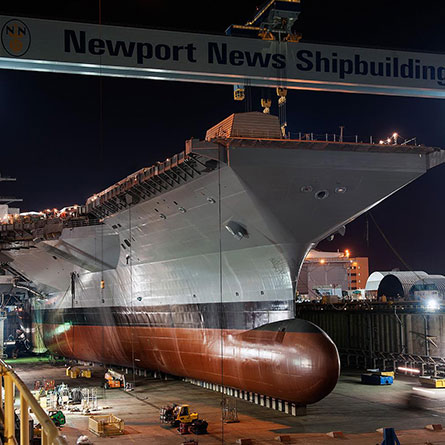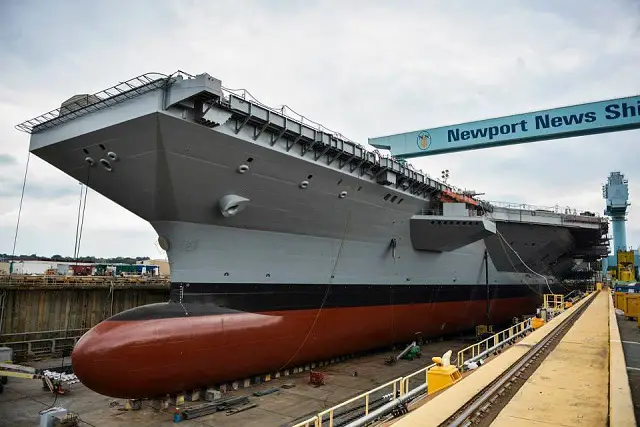Could a $13 billion dollar aircraft carrier that took five years to build, now home to 5,000 people, just suddenly tip over?


Tapered hulls may make carriers look unsteady, but there’s more than meets the eye here.

According to the Greek mathematician and inventor Archimedes, any object resting on the surface of water is acted upon by a buoyancy force. The buoyancy force pushes upward, while gravity pushes downward. As a result, if the object is less dense than the liquid it displaces, it will float.
That’s essentially how ships stay afloat. Aircraft carriers, and most other ships, also have sharp prows, the front part of a ship above the waterline.
It may have a knifelike bow, which helps reduce wind resistance and aerodynamic drag, but below the water line, the hull spreads out and is actually quite wide.

Another part of the post shows what is known in naval architecture as the bulbous bow. Traditionally, ship designers assumed that a knife-like bow below the waterline reduced drag, allowing ships to effectively cut through water. This, in turn, made for faster ships and greater fuel savings.


Starting in the 1920s, shipyards built passenger ships with large, bulb-like protrusions below the waterline. One of the most famous ships with a bulbous bow was the Imperial Japanese Navy battleship Yamato, the largest battleship of all time. Yamato’s bulbous bow stuck out 10 feet, giving her an extraordinary top speed of 28 knots.

U.S. Navy aircraft carriers have been built with bulbous bows since the USS Ronald Reagan. Bulbous bows are standard on the latest Ford-class carriers, including USS Gerald R. Ford, and will be features of the future carriers John F. Kennedy, Enterprise, and Doris Miller.

A tremendous amount of naval know-how goes into every aircraft carrier, and not all of it is visible when the ship is in the water. An aircraft carrier is probably the ship least likely in the fleet to flip over, or “turn turtle” as it’s known in the Navy. That is, until the shooting starts.


